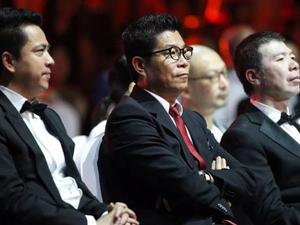来源:伯虎财经
作者:陈平安
两条腿走路。
国庆假期,车圈里充满了快活的味道。
在双节假期的最后一天,华为余承东在朋友圈po出了新款问界M7的战报,称自9月12日发布以来,新M7大定超过了5万台,且仅仅10月6日一天就新增了7000台。

大定是汽车行业销售的术语,需要实实在在交5000元订金且更改购买意愿不可退还,选择大定的用户通常也已经坚定了买车的决心。而不到一个月5万台是个什么水平呢?按照今年9月的行业数据来看,仅次于$比亚迪股份(01211.HK)$和$特斯拉(TSLA.US)$中国,坐稳头部梯队。
华为吃肉,理想喝汤。根据车fans创始人孙少军在社交媒体分享,$理想汽车-W(02015.HK)$/$理想汽车(LI.US)$国庆假期定单破1万5,9月新增订单破4万。
虽然在产品和定价区间,问界和理想有所区别,但都是增程路线的坚定支持者。在增程还不被看好的早年,李想气得直接开骂:“一帮搞臭技术的,天天冲我们BB”。去年,余承东也和长城李瑞峰就增程是否落后的问题激情开麦。
现在看来,落不落后还没有定论,香倒是挺香的。今年以来已经有多家车企加入了增程的行列,比如零跑、长安深蓝等。
最新的加入者是小米。据36氪PowerOn报道,官宣纯电车型后,小米汽车已确定开发增程式电动车,目前在招聘平台上,也能够看到相关的岗位被放出。
关于新能源汽车行业的激烈竞争,小米不是没有心理准备。雷军此前就曾发表观点,小米汽车成功的唯一途径就是跻身全球前五,这需要迅速形成销量规模。从整体市场来看,虽然纯电仍然是新能源汽车的主流,但是包含增程在内的混动市场增速明显高过纯电。
那么,增程会成为小米汽车加速的关键一步吗?
混动市场,增程香
虽然包括马斯克在内的大佬并不看好混动,认为其只不过是一个过渡阶段,但事实是,混动市场仍然处于高速增长中。
根据今年上半年的数据,新能源车累计销售了 374.7 万辆,其中纯电动车销售了 271.9 万辆,占比 73%;插混车型(含增程)销售了 102.5 万辆,占比 27%。纯电当下仍然是主力,但是混动车 91.1%的增速远远高于纯电车的31.9%。
和纯电相比,混动除了拥有更久的续航,能够消除用户的里程焦虑,还拥有比纯电车型更低的售价。这是由于混动车型需要搭载发动机,因此搭载的电池也更小,反而大大节省了成本空间。以比亚迪汉 Dm-i 和汉 EV 为例,两者的起售价相差了2万元。
这让混动车既具备了电车的驾驶体验,也把价格打到燃油车的价位,形成 “油电同价” ,从而大大拓宽了用户人群。比亚迪今年上半年卖出的125万辆车里,有63万辆是混动车型。新势力里表现最好的理想,全系车型都是混动,
中国电动汽车百人会论坛上,清华大学教授、中国科学院院士欧阳明高表示,5-10 年内,插电混动(包括增程电动)在整个新能源汽车中的占比有望提升到 30%-40%。
理解了混动之于纯电,你也就能更好的理解增程之于插混。正如前文所提,增程在很长一段时间内都备受质疑,主要是因为在技术上,增程更简单。简单解释,增程路线就是给电池配备一个充电宝——燃油发电,而插混比如多挡DHT则可以实现电动机、发动机共同驱动车轮,没有功率浪费的问题。
但问题是对于消费者而言,这并不是他们关心的问题,价格才是。此前理想汽车CEO李想曾在微博分享,之所以选择增程路线,是因为采用单档并联每年能为用户节约的油费可能只有数百元,甚至连硬件成本都不一定能收回,反而会降低目标用户在意的NVH体验。

而在理想们的努力下,相比其他混动技术,增程明显完成了更好的市场教育。在宣传上,一些厂商也更倾向于往增程去靠,比如领克08的超级增程电动方案。
从一些主机厂商的表现来看,增程确实成为了销量增长的关键手段。今年三月上市了首款增程车型C11增程款的零跑帮助其在五月重回万辆水平,吉利银河L7连续三个月销量过万。
对于小米自身而言,其优势在于自身的品牌势能。在首款纯电车型聚焦中高端市场的同时,推出增程车型无疑有利于扩大潜在市场,同时增程所带来的更多的成本空间也能让小米更从容的在价格上给出足够的吸引力,去兑现自己的用户池。
两条腿走路一定比一条腿要稳得多。
增程不是决定因素
对于前不久上市的小鹏G6,同行曾有一句有意思的评论:小鹏造出了小米想造的车。但与其说是小鹏造出了小米想造的车,不如说是同行们都在用小米造手机的方式造车——配置够顶、价格够用心。
从这个角度来看,增程重要,但不是最重要的那个。
一方面,理想的成功让越来越多的厂商们开始重视增程,竞争也愈发激烈。比如$长城汽车(02333.HK)$今年推出的、搭载了最新的智控四驱电混动技术Hi4的枭龙 MAX 起售价为 16 万元,前文提到的吉利银河 L7 的起售价为 14 万元。增程带来的成本优势会在这种情况下被削减。
另一方面,早前理想汽车的成功,与其归功于增程,更应该归功于对市场需求的洞察。无论是增程解决里程焦虑、带来成本优势,还是聚焦家庭增换购需求,主打空间、智能等需求。
当下,智驾越发成为了主要的影响用户购车意愿的因素。以问界为例,在问界的抖音直播中,提的最多的就是自身的智驾能力。不仅是华为,越来越多的厂商开始把智驾作为自身竞争力的重要组成部分。
第一梯队的$小鹏汽车-W(09868.HK)$/$小鹏汽车(XPEV.US)$和华为官宣,分别要把城市 NOA 推广到50城和45城,$蔚来-SW(09866.HK)$/$蔚来(NIO.US)$和理想也在这方面不断加大投入。在产品端,新M7和小鹏G9、G6的智驾版本比例都突破50%。
目前新能源汽车市场还远远称不上战局已定,靠着一款车型完成逆袭的好戏最近也在不断上演。作为具有巨大品牌势能的玩家,小米在品牌认可度上具有相当的领先,小米有海量的手机用户,这些都是小米汽车的潜在用户;而作为在消费电子打磨十几年巨头,在车机等方面也有着不小的优势,对比其他主机厂这也是不小的竞争力。
随着华为回归手机市场,原有的格局势必会被打破。在手机市场持续低迷的当下,小米汽车的成功与否意味着小米能否成功破局。
增程是一步好棋,但不是最关键的那个。小米内部人士表示,小米汽车已经明确不靠硬件、靠软件赚钱的战略。为了保持小米一贯高性价比的优势,小米汽车的零部件利润率将保持在1%左右,未来盈利主要靠软件服务及生态服务。
如何做好软件以及产品定义,才是最关键的。
编辑/tolk
Source: Bohu Finance
Author: Chen Ping An
Walk on two legs.
During the National Day holiday, the car circle was filled with a sense of joy.
On the last day of the double holiday, Yu Chengdong of Huawei posted a report on the new M7 in his circle of friends, saying that since it was released on September 12, the new M7 must have exceeded 50,000 units, and that 7,000 units were added on October 6 alone.

Dading is a sales term in the automobile industry. You need to actually pay a deposit of 5,000 yuan and change your intention to buy and is not refundable. Users who choose Dading usually have already made up their mind to buy a car. But what level is less than 50,000 units a month? Judging from the industry data for September this year, it is second only to$BYD COMPANY(01211.HK)$with$Tesla(TSLA.US)$China is firmly in the lead.
Huawei eats meat and is ideal for drinking soup. According to Sun Shaojun, founder of Che Fans, shared on social media,$LI AUTO-W(02015.HK)$/$Li Auto(LI.US)$Orders for the National Day holiday exceeded 15,000, and new orders in September exceeded 40,000.
Although there is a difference between product and pricing, inquiry and ideals, they are all staunch supporters of the range extension route. In the early years, when range extension was not favored, Li Xiang was so angry that he directly scolded us: “A bunch of people who make a foul use of technology are attacking our BB every day.” Last year, Yu Chengdong and Li Ruifeng of the Great Wall had a passionate discussion about whether the range extension was lagging behind.
At present, it seems that it is still inconclusive whether it will fall behind or not; the fragrance is quite fragrant. Since this year, a number of car companies have joined the ranks of extended range, such as Zero Run, Changan Deep Blue, etc.
The latest addition is Xiaomi. According to the 36Krypton PowerOn report, after officially announcing the pure electric model, Xiaomi Auto has decided to develop an extended-range electric vehicle. Currently, on the recruitment platform, it can also be seen that related jobs have been released.
Regarding the fierce competition in the NEV industry, Xiaomi is not unprepared. Lei Jun has previously expressed his opinion that the only way for Xiaomi to succeed is to rank in the top five in the world. This requires a rapid development of sales volume. Looking at the overall market, although pure electricity is still the mainstream of new energy vehicles, the growth rate of the hybrid market, which includes range extension, is significantly higher than that of pure electricity.
So, will the range extension be a critical step for Xiaomi to accelerate?
Hybrid market, increased range and incense
Although bosses, including Musk, are not optimistic about hybrid and think it is just a transition phase, the truth is that the hybrid market is still growing rapidly.
According to data from the first half of this year, a total of 3.747 million new energy vehicles were sold, of which 2.719 million were sold, accounting for 73%; plug-in models (including extended range) sold 1,025,000 units, accounting for 27%. Pure electricity is still the main force, but the 91.1% growth rate for hybrid vehicles is far higher than the 31.9% growth rate for pure electric vehicles.
Compared with pure electric models, in addition to having a longer battery life and eliminating users' mileage anxiety, hybrids also have a lower price than pure electric models. This is because hybrid models need to be equipped with engines, so they also have smaller batteries, which in turn greatly saves cost and space. Take the BYD Han DM-i and Han EV as an example. The starting price difference between the two is 20,000 yuan.
This allows hybrid cars not only to have the driving experience of an electric car, but also to bring the price to the price of a fuel vehicle, forming a “equal price for oil and electricity”, thus greatly expanding the user base. Of the 1.25 million cars that BYD sold in the first half of this year, 630,000 were hybrid models. The ideal performance among the new forces is ideal. All models are hybrid.
At the China Electric Vehicle 100 People's Conference Forum, Ouyang Minggao, a professor at Tsinghua University and an academician of the Chinese Academy of Sciences, said that within 5-10 years, the share of plug-in hybrids (including extended-range electric) in total NEVs is expected to increase to 30%-40%.
Having understood that hybrid is different from pure electric, you can also better understand that range extension is versus plug-in mixing. As mentioned earlier, range extension has been questioned for a long time, mainly because technically, range extension is simpler. Simply explained, the range extension route is to equip the battery with a power bank - fuel to generate electricity, while a plug-in hybrid such as a multi-speed DHT allows the motor and engine to drive the wheels together, so there is no problem of power waste.
But the problem is for consumers, this isn't their concern; it's the price. Li Xiang, CEO of Ideal Auto, shared on Weibo that the reason they chose the range extension route is because using a single-speed parallel connection may only save users hundreds of yuan in fuel costs each year, and even hardware costs may not necessarily be recovered; on the contrary, it will reduce the NVH experience that target users are concerned about.

However, thanks to the efforts of idealists, compared to other hybrid technologies, the range extension has clearly completed better market education. In terms of publicity, some manufacturers are also more inclined to rely on range extenders, such as the Linker 08 super range extender electric solution.
Judging from the performance of some mainframes, range extension has indeed become a key means of increasing sales volume. The first extender model, the C11, the Zero Run, launched in March of this year, helped it return to the level of 10,000 vehicles in May. The Geely Galaxy L7 sold over 10,000 for three months in a row.
For Xiaomi itself, its advantage lies in its own brand potential. While the first all-electric model focuses on the middle and high-end markets, the launch of the extended-range model is undoubtedly conducive to expanding the potential market. At the same time, the additional cost space brought by the range extension also allows Xiaomi to be more relaxed and attractive enough in terms of price to redeem its user pool.
Walking on two legs must be much more stable than on one leg.
Range extension is not a deciding factor
Regarding the recently launched Xiaopeng G6, a peer once made an interesting comment: Xiaopeng made the car that Xiaomi wanted to build. But not so much that Xiaopeng made the car that Xiaomi wanted to build, it was rather that his peers were all using Xiaomi's mobile phones to build cars — the configuration was high enough, and the price was careful enough.
From this point of view, range extension is important, but it's not the most important one.
On the one hand, ideal success has made more and more manufacturers pay attention to range extension, and competition is becoming more intense. For example$GWMOTOR(02333.HK)$The starting price of the Fierce Dragon MAX, which was launched this year and is equipped with the latest intelligent four-wheel drive electric hybrid technology Hi4, is 160,000 yuan, and the Geely Galaxy L7 mentioned earlier starts at 140,000 yuan. The cost advantage brought about by increased range will be cut in this case.
On the other hand, the success of Ideal Auto in the past was due not only to increased range, but also to insight into market demand. Whether it's increasing range to solve mileage anxiety and bring cost advantages, or focusing on households' demand for additional purchases, it focuses on needs such as space and intelligence.
Currently, smart driving is increasingly becoming the main factor affecting users' willingness to buy cars. Take Questionnaire as an example. In the Douyin live broadcast of Questionnaire, what was mentioned the most was his ability to drive intelligently. Not only Huawei, but more and more manufacturers are beginning to make smart driving an important part of their competitiveness.
The one in the first tier$XPENG-W(09868.HK)$/$XPeng(XPEV.US)$It was officially announced with Huawei that the city's NOA would be extended to 50 cities and 45 cities, respectively.$NIO-SW(09866.HK)$/$NIO Inc(NIO.US)$And ideal is also continuously increasing its investment in this area. On the product side, the proportion of smart driving versions of the new M7 and Xiaopeng G9 and G6 has exceeded 50%.
At present, the NEV market is far from being settled, and the drama of relying on one model to complete a counterattack has also continued to be staged recently. As a player with huge brand potential, Xiaomi is quite ahead in terms of brand recognition. Xiaomi has a large number of mobile phone users, all of which are potential users of Xiaomi cars; yet, as a giant in consumer electronics polishing for more than ten years, it also has significant advantages in terms of cars, etc., and is also quite competitive compared to other OEMs.
As Huawei returns to the mobile phone market, the original situation will surely be disrupted. At a time when the mobile phone market continues to be sluggish, the success or failure of Xiaomi cars means whether Xiaomi can successfully break the game.
Range extension is a good move, but it's not the most critical one. Xiaomi insiders said that Xiaomi Auto has made it clear its strategy of not relying on hardware or software to make money. In order to maintain Xiaomi's consistent cost performance advantage, the profit margin for parts of Xiaomi Auto will remain around 1%. Future profits will mainly depend on software services and ecological services.
How to define software and products is the most critical.
editor/tolk

VIP课程推荐
APP专享直播
热门推荐
收起
24小时滚动播报最新的财经资讯和视频,更多粉丝福利扫描二维码关注(sinafinance)








